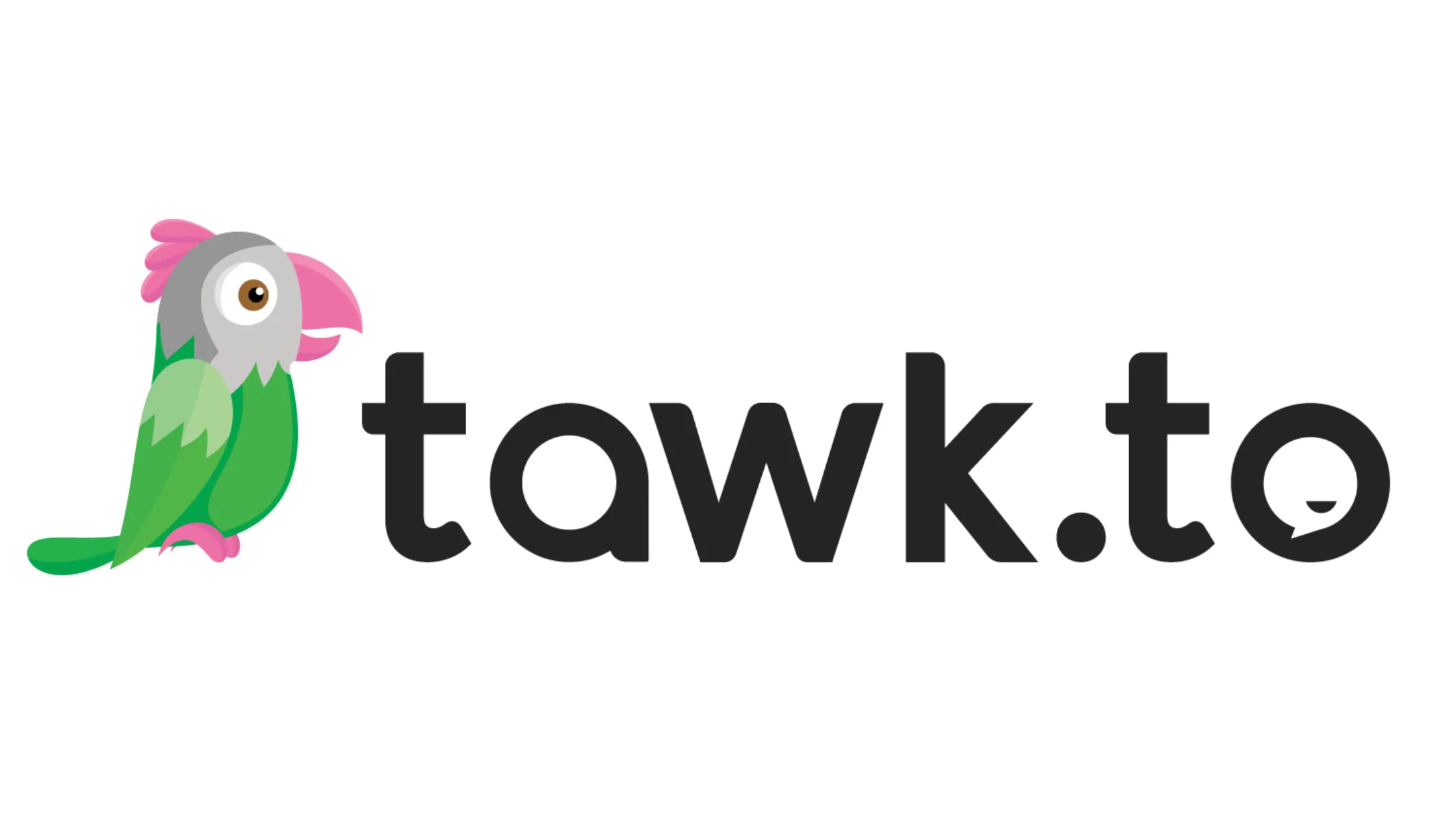
What are Startup Metrics?
Learn the essential startup metrics every founder needs to track, including CAC, LTV, and churn rate, to grow your business sustainably and efficiently.
When you're running a startup, there's always a whirlwind of activities. From hiring the right team to building your product, it can feel overwhelming. But there's one thing every founder needs to keep an eye on to make sure their company is on the right path: startup metrics. These are the numbers that help you understand if you're heading toward success or if adjustments are needed.
Now, you might be thinking, “What startup metrics should I even care about?” And you’re not alone! In my early days as a founder, I didn’t fully understand the importance of tracking the right metrics either. But as your company grows, especially if you’re seeking investment or scaling quickly, knowing your numbers is essential. Let’s break down some of the key metrics every startup founder needs to understand from day one.
What Are Startup Metrics?
Before diving into the specific metrics, let's first talk about what startup metrics actually are. In simple terms, startup metrics are the measurable indicators that reflect how well your business is performing. They can cover everything from customer acquisition to revenue growth and even your company's overall financial health.
But why are they important? Tracking the right metrics helps you:
- Make informed decisions: You can't improve what you don't measure.
- Understand your customers: By analyzing how users interact with your product, you can spot opportunities to improve.
- Secure funding: Investors want to see data that proves your startup is growing and has the potential for scalability.
- Optimize resources: Know where to focus your time and money for the greatest impact.
Key Metrics Every Startup Should Track
Customer Acquisition Cost (CAC)
CAC is one of the first numbers you’ll want to track. It’s essentially how much you’re spending to acquire a new customer. As a founder, this metric helps you determine the efficiency of your marketing and sales efforts.
To calculate it, take the total cost of marketing and sales over a specific period and divide that by the number of new customers you gained during that time. Keeping CAC low while maximizing your reach is the ultimate goal.
Why it matters:
- High CAC means you're spending too much to acquire each customer, which isn't sustainable long-term.
- Keeping CAC in check can lead to better profit margins and stronger growth.
Lifetime Value (LTV)
Once you’ve calculated CAC, the next logical step is to figure out how much value each customer brings to your startup over the course of their relationship with you. This is known as lifetime value (LTV). It’s critical for understanding whether you’re making more from customers than you’re spending to acquire them.
LTV is calculated by estimating how much a customer will spend during their entire time with your company. You want your LTV to be significantly higher than your CAC—ideally, 3x or more.
Why it matters:
- LTV helps you figure out how much you can afford to spend on acquiring new customers.
- If your LTV is low, it might indicate that your product isn't sticky enough, and users are churning too quickly.
Churn Rate
Speaking of churn, it’s crucial to measure how many customers leave your service over time. Your churn rate is the percentage of customers who stop using your product during a given period. If your churn rate is high, it means customers aren't finding long-term value in your product, and this can quickly become a red flag, especially for investors.
Why it matters:
- High churn means you're losing customers as fast as you're gaining them, which limits growth.
- Keeping churn low leads to better retention and higher LTV.
Monthly Recurring Revenue (MRR)
If you're running a subscription-based startup, monthly recurring revenue (MRR) is a key indicator of your financial health. MRR gives you a clear picture of the revenue you can expect every month based on your active subscriptions.
Calculating MRR is straightforward. Multiply the number of active subscribers by the average revenue per user (ARPU). This metric helps you track revenue growth and stability, making it especially valuable when pitching to investors or planning for future growth.
Why it matters:
- MRR shows how sustainable and predictable your revenue stream is.
- It helps you identify growth trends and predict future earnings.
Burn Rate
As a founder, one of the most critical metrics to keep an eye on is your burn rate—how quickly you're spending money. The burn rate tells you how long your company can continue operating before running out of cash.
Founders often underestimate the importance of managing burn rate. You could have an amazing product and a strong team, but if your cash flow runs dry, your startup won’t survive.
Why it matters:
- Investors always ask about your burn rate, as it shows how efficiently you're managing your resources.
- Understanding your burn rate helps you plan for future fundraising and ensure you’re not spending more than you’re earning.
Balancing Growth and Sustainability
Metrics to Watch as You Scale
As you start to scale, you’ll need to add a few more metrics to your toolkit. Here are two that every scaling startup should monitor:
- Net Promoter Score (NPS): A metric that measures customer satisfaction and loyalty. It’s based on the question, “How likely are you to recommend our product to a friend?” A high NPS means happy customers, which typically correlates with lower churn and higher LTV.
- Gross Margin: This tells you how much of your revenue is profit after accounting for the costs of production or service delivery. A healthy gross margin means your business is running efficiently.
The Balance Between Growth and Profitability
Startups are often obsessed with growth—sometimes at the expense of profitability. While it's important to grow fast, especially in competitive industries, don’t lose sight of profitability. Focusing on metrics like CAC, LTV, and burn rate ensures that you’re not just growing but growing in a sustainable way.
Understanding Unit Economics
As you scale your startup, unit economics becomes a vital metric. Simply put, unit economics looks at the direct revenues and costs associated with a single unit of your product or service. This metric tells you if your business model is sustainable on a per-unit basis, which is crucial for long-term growth.
Here’s how to break it down:
- Revenue per unit: How much are you earning from each customer or transaction?
- Cost per unit: What does it cost to deliver your product or service to that customer?
Your goal is to ensure that the revenue per unit is significantly higher than the cost per unit. This gap determines your profit margin, which can help you scale more confidently.
Why unit economics matters:
- Helps you fine-tune your pricing strategy.
- Allows you to predict profitability as you grow.
- Gives you insight into how to optimize costs as your customer base expands.
Gross Profit vs. Net Profit
To fully grasp your startup’s financial performance, you also need to differentiate between gross profit and net profit.
- Gross profit: This is your total revenue minus the cost of goods sold (COGS). It doesn’t include other operating expenses like marketing, rent, or salaries. It’s a raw indicator of how efficiently you’re delivering your product.
- Net profit: This is what’s left over after you deduct all your expenses—operating, taxes, interest—from your total revenue. It’s the true bottom line, reflecting how well your company is managed and how efficiently it operates.
Why they matter:
- Gross profit lets you see if your product or service is financially viable.
- Net profit reveals whether your overall business is profitable after all expenses are accounted for.
Financial Metrics for Investor Conversations
If you’re planning to raise capital, certain financial metrics are going to come up in conversations with potential investors. Make sure you’re prepared by tracking the following:
Runway
Your runway is how long your startup can survive before it runs out of cash. It’s calculated by dividing your current cash reserves by your monthly burn rate. If you have $500,000 in the bank and your burn rate is $50,000 per month, then you’ve got a 10-month runway.
Investors want to know your runway to assess how urgent your need for funding is, and to evaluate your financial management.
Monthly Active Users (MAU) and Daily Active Users (DAU)
For product-focused startups, especially in SaaS or mobile apps, tracking monthly active users (MAU) and daily active users (DAU) is critical. These metrics give you insights into how engaged your user base is and whether you’re achieving the right growth trajectory. Consistent or growing MAU/DAU indicates a product-market fit, which is a huge green light for investors.
Why they matter:
- Investors look for strong user engagement as a sign of scalability.
- A growing MAU/DAU means that customers find value in your product and keep coming back.
Operational Efficiency Metrics
Time to Market
One critical aspect of launching a startup is time to market—how quickly you can bring your product or feature to customers. In fast-moving industries, speed is often a competitive advantage. Delays can mean losing out to competitors or missing key opportunities.
Why it matters:
- Faster time to market helps you capitalize on market trends and customer demand.
- It allows you to gather user feedback sooner, iterate faster, and stay ahead of competitors.
Development Velocity
Related to time to market is development velocity, which measures how quickly your engineering team can ship new features or products. It’s an internal metric that shows how efficiently your team works. Higher velocity means faster iteration cycles, allowing you to test, refine, and scale quicker.
Customer Success Metrics
Customer Retention Rate
While acquiring new customers is essential, retaining them is just as important. Your customer retention rate measures the percentage of customers who continue to use your product over time. High retention rates are often linked to strong customer satisfaction and can lead to higher lifetime value.
Why it matters:
- A high retention rate can signal product-market fit and satisfied customers.
- It directly impacts other metrics like LTV and churn rate.
Customer Satisfaction Score (CSAT)
Tracking your customer satisfaction score (CSAT) is another key metric that helps gauge how happy your customers are with your product or service. Typically measured through post-purchase surveys, this score can give you valuable insights into what’s working and what needs improvement.
Why it matters:
- Happy customers are more likely to become loyal, long-term users.
- A higher CSAT often correlates with lower churn and increased word-of-mouth referrals.
Scaling Your Startup with the Right Metrics
Focus on the Right Data at the Right Time
As a founder, you’ll encounter dozens of potential metrics to track. The key is knowing which ones to focus on at each stage of your startup’s growth. In the early stages, product-market fit metrics like CAC, LTV, and MAU are crucial. As you scale, metrics related to operational efficiency and financial health become more important.
Avoiding Data Overload
It’s easy to get overwhelmed by data, especially as your startup grows and you have more access to analytics tools. But remember, not all data is created equal. Focus on the metrics that align with your current growth stage and business goals. By doing this, you’ll avoid analysis paralysis and stay focused on what truly drives your startup forward.
Horizon-Labs.co: Your Trusted Partner for Tracking Startup Metrics
At Horizon-Labs.co, we’ve worked with dozens of startups at various stages of growth, helping founders not only build their products but also implement the right tools to track critical metrics. Whether you're trying to improve your churn rate, optimize CAC, or measure development velocity, we’ve got the experience to help you succeed.
Our team, with years of startup and product development experience, will ensure you’re tracking the right numbers to keep your growth sustainable and scalable. We know what metrics matter at each stage of your journey and can help you make data-driven decisions to propel your business forward.
Ready to build a successful startup? Contact us at info@horizon-labs.co or schedule a call at Horizon Labs Contact to discuss how we can help you track the metrics that matter and accelerate your growth.
Frequently Asked Questions (FAQs) about Startup Metrics:
Q: What are the most common mistakes founders make with startup metrics?
A: One common mistake is tracking too many metrics without focusing on the ones that truly matter for the business’s current stage. Founders often get overwhelmed by data but fail to act on it. Another mistake is ignoring customer-centric metrics like churn and lifetime value in favor of vanity metrics like downloads or page views. It’s also easy to neglect cost-efficiency metrics such as CAC, leading to unsustainable growth.
Q: How can I tell if my startup metrics indicate product-market fit?
A: Product-market fit is often reflected in several key metrics: low churn rates, increasing customer retention, and a high Net Promoter Score (NPS). Another signal is when your customer acquisition costs start decreasing as organic growth (word-of-mouth referrals, for example) increases. Consistent month-over-month growth in monthly active users (MAU) or daily active users (DAU) can also be strong indicators.
Q: What tools can I use to track startup metrics efficiently?
A: There are several tools available to help founders track startup metrics. For customer acquisition and retention, tools like Mixpanel or Amplitude can give you a clear picture of user behavior. For financial metrics, many startups use software like QuickBooks or Xero. If you’re looking for more comprehensive dashboards, platforms like ChartMogul or Baremetrics can integrate multiple data sources into one place to give you a holistic view.
Q: How often should I review my startup metrics?
A: The frequency of reviewing your startup metrics depends on the type of metrics and the stage of your business. Financial and operational metrics like burn rate and monthly recurring revenue (MRR) should be reviewed monthly or even weekly. On the other hand, product-related metrics like customer satisfaction or user growth can be monitored bi-weekly or monthly to allow enough time for trends to develop.
Q: How do I know when it’s time to adjust my metrics?
A: You should adjust your metrics as your business scales and your objectives evolve. Early-stage startups might focus on product-market fit metrics like engagement and churn. As you grow, you’ll shift your focus to scalability and profitability metrics, such as gross margin and operational efficiency. A good rule of thumb is to evaluate whether your current metrics align with your immediate business goals. If they don’t, it’s time to refine them.
Q: Can tracking the wrong metrics hurt my startup?
A: Absolutely. Focusing on vanity metrics, like social media followers or website traffic without conversions, can give a false sense of progress. These numbers might look good on paper but don’t provide meaningful insights into the health of your business. Ignoring core metrics like cash flow, burn rate, or customer retention can lead to overspending or scaling too fast without enough market demand.
Q: How do startup metrics affect investor decisions?
A: Investors rely heavily on startup metrics to evaluate your business’s potential for growth and scalability. They look at metrics like customer acquisition cost, lifetime value, and burn rate to assess the efficiency of your operations. Strong metrics that show steady growth, low churn, and sustainable financial health can make your startup more attractive to potential investors. On the flip side, poor metrics or a lack of data can be a deal-breaker.
Q: Is it possible to automate startup metric tracking?
A: Yes, many startups use automation tools to track and report metrics. Platforms like Stripe for payments or HubSpot for CRM data often have built-in analytics that automatically calculate important metrics such as revenue, customer lifetime value, and churn. With the right integrations, you can automate reports that compile data from various sources, giving you a real-time dashboard to monitor the health of your startup without constant manual input.
Q: How do I choose the right metrics for my startup?
A: The right metrics depend on your startup's stage and business model. In the early stages, focus on metrics that show product-market fit, such as customer engagement, acquisition cost, and retention rates. As you grow, financial metrics like burn rate, monthly recurring revenue, and lifetime value become more important. Always align your metrics with your immediate business goals and adjust them as those goals evolve.
Q: What’s the difference between vanity metrics and actionable metrics?
A: Vanity metrics are numbers that look good on the surface but don’t provide meaningful insights into the performance or health of your startup. Examples include website traffic, social media likes, or total app downloads. Actionable metrics, on the other hand, are tied to your startup’s growth and profitability. Metrics like customer acquisition cost, lifetime value, and churn rate help you make informed business decisions and guide your strategy.
Q: How can I reduce my customer acquisition cost (CAC)?
A: To reduce CAC, focus on optimizing your marketing channels and improving conversion rates. This can involve refining your target audience, improving ad targeting, and enhancing your onboarding process to increase the percentage of leads that convert to customers. Additionally, investing in word-of-mouth growth through referrals or customer testimonials can help lower your reliance on paid acquisition methods.
Q: How do I calculate my startup’s runway?
A: To calculate runway, divide your current cash reserves by your monthly burn rate. For example, if you have $200,000 in the bank and a burn rate of $20,000 per month, you have 10 months of runway. This metric is important because it tells you how long your company can operate before you need additional funding or revenue growth to stay afloat.
Q: What is a good churn rate for a startup?
A: A good churn rate varies depending on your industry and business model, but in general, a churn rate of less than 5% monthly is considered strong for most SaaS companies. If your churn is higher, it’s important to investigate why customers are leaving and address potential issues with your product, customer support, or pricing model.
Q: How can I improve my startup’s lifetime value (LTV)?
A: Improving lifetime value (LTV) requires focusing on customer retention and maximizing the revenue you generate from each customer over time. This can be done through upselling or cross-selling related products, improving the user experience to keep customers engaged, and providing excellent customer support to encourage long-term loyalty. Lowering churn is another key factor in increasing LTV.
Q: What’s the significance of net revenue retention (NRR)?
A: Net revenue retention (NRR) measures how much revenue you retain from existing customers after accounting for upgrades, downgrades, and churn. A high NRR means that your current customers are not only sticking around but are also spending more on your product over time. It’s an important metric for showing growth potential, especially in subscription-based businesses.
Q: How can I track the effectiveness of my marketing efforts through metrics?
A: Metrics like customer acquisition cost (CAC), conversion rates, and return on ad spend (ROAS) are key indicators of your marketing effectiveness. By analyzing how much you spend on marketing to acquire new customers and comparing it to the revenue those customers generate, you can gauge whether your marketing efforts are paying off. Additionally, tracking engagement metrics such as click-through rates and cost per lead can help you optimize individual campaigns.
Q: What role does cohort analysis play in understanding startup metrics?
A: Cohort analysis allows you to group users or customers based on a shared characteristic (such as when they signed up or made their first purchase) and track their behavior over time. This can help you understand how different groups of customers engage with your product, allowing you to spot trends, measure retention, and identify areas where improvements are needed. It’s especially useful for identifying patterns in churn or growth.
Q: How do I track and improve operational efficiency using startup metrics?
A: Metrics like development velocity, time to market, and resource utilization help you assess operational efficiency. To improve, you can streamline workflows, invest in automation tools, or outsource specific tasks to specialized teams. Regularly reviewing these metrics ensures you’re optimizing the speed and quality of your product development processes without overextending your resources.
Whether you're a new founder starting out or a seasoned product/engineering leader who has questions, we're more than happy to hear about what you're building and offer guidance - free of charge. You can contact our co-founders Sinan or Saif directly, or drop your email address below to have one of us reach out to you.
Need Developers?
We help startups build ideas into apps their customers will love (without the engineering headaches).
















For Startups & Founders
We've been founders ourselves and know how valuable the right communities, tools, and network can be, especially when bootstrapped. Here are a few that we recommend.

Building Real-Time Embedded Systems Apps for Industrial Automation
Learn how to design, develop, and optimize real-time embedded systems apps for industrial automation. Step-by-step guide covers everything you need in 2025
Read more
Custom Embedded Systems: Powering Next-Gen IoT Solutions
Discover how custom embedded systems power next-gen IoT solutions. Learn their benefits, real-world examples, key development steps, and future trends.
Read more
Embedded Systems Apps: A Guide
Discover what embedded systems are, their core hardware and software components, real-world applications, and how these apps impact product performance.
Read more
How Tawk.to Can Boost Your Startup’s Customer Support Game
Learn how Tawk.to can benefit startups by enhancing customer support and engagement. Perfect for early-stage founders!
Read more
Grow Your Startup With Anthropic's AI-Powered Tools
Discover how Anthropic's cutting-edge AI tools can accelerate your startup's success. Learn about their benefits and see why they can be trusted by startups.
Read more
Dashlane
Simplify password management and security for your startup with Dashlane. Discover how it protects your data, scales with your team, and boosts efficiency.
Read more
How Startups Can Leverage OpenAI’s API for Growth
Learn how startups can leverage OpenAI’s API to automate tasks, boost productivity, and build smarter apps without breaking the bank.
Read more
What is Founder-Market Fit?
Founder-market fit is the secret ingredient behind startup success. Learn what it is, why it matters, and how to achieve it as a founder.
Read more
What is Equity for Startup Founders?
Learn what equity is, why it matters for startups, and how to allocate it effectively. A beginner's guide for startup founders.
Read more
CereberalValley.ai
Explore CerebralValley.ai, the essential community for AI startups. Connect with AI experts, access resources, and network with investors to accelerate growth.
Read more
Alchemist Accelerator
If you're a B2B startup, Alchemist is by far one of the greatest communities that can accelerate your startup. Highly recommended!
Read more
Techstars: Launching Pad for Tech Startups
Discover how Techstars, the premier startup accelerator, can supercharge your venture with mentorship, funding, and a global network of innovators.
Read more